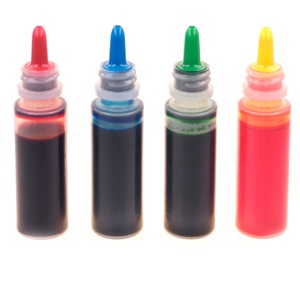
Some cereals, candies and cakes contain much more artificial coloring than parents probably expect, according to a new study.
In the US, food and beverage companies disclose artificial coloring on labels, but do not disclose specific amounts.
Several studies have suggested some children may be sensitive to artificial coloring or the preservatives that often accompany it. The dyes have been linked to inattention and hyperactivity.
Making products more appealing is unnecessary
For the new study, researchers bought and tested common processed foods to find out how much artificial coloring they included.
"Very few of these products were nutritious," said Laura J. Stevens, who worked on the study at Purdue University in West Lafayette, Indiana.
Children probably consume more of the heavily dyed foods, since bright colours appeal to kids, she said.
"We don't need to make these products appeal more to kids, kids are already obese," she told Reuters Health.
Read: Not all processed foods are bad
Among breakfast cereals, Fruity Cheerios, Trix and Cap'n Crunch's OOPS! All Berries had the most artificial dyes, with about 32, 36 and 41 milligrams per serving, respectively.
These cereals also had some of the highest sugar contents. Cap'n Crunch's OOPS! All Berries contained 15 grams of sugar per serving, according to the analysis published in Clinical Paediatrics.
Most of the highly colored cereals contained Red #40, Yellow #6, Yellow #5 or Blue #1, the most popular artificial colours. But some cereals, like Special K Red Berries and Berry Berry Kix, were colored with strawberries or fruit juice and contained no artificial coloring.
Contribution to obesity and other health problems
Numbered artificial colours are derived from petroleum, Stevens noted.
Candies, cakes and colored icings also had large amounts of artificial colours. A serving of M&M's Milk Chocolate included almost 30 milligrams of artificial colours, and a packet of original Skittles had 33 milligrams.
The same group of researchers published a similar study on beverages in September of 2013 and found that dyes in the drinks varied widely. Some clear sodas, like Sprite, contained no coloring, while Kool-Aid Burst Cherry contained more than 52 milligrams per serving.
In general, more brightly colored foods and drinks had more dyes in them, Stevens said. But some heavily dyed foods were unexpected.
"Some white foods have dye, like marshmallows, and French dressing and cherry pie fillings actually had colour enhancers too," she said.
Read: Processed foods a sodium source
"There are also dyes in paediatric medicines, personal care products, mouthwash and toothpaste," she said.
Natural colour alternatives are available, but those don't stand up to heat, processing and light, Stevens said.
The study coincides with a report from the Environmental Working Group suggesting high levels of sugar in cereals are contributing to childhood obesity and other health problems (see Reuters story of May 15, 2014 here: http://reut.rs/1grjWHN).
PepsiCo and Kraft Foods, makers of Cap'n Crunch and Kool-Aid, respectively, did not immediately respond when reached for comment.
Underestimating the effects
General Mills said dye levels in Trix cereal would be as much as 30% lower than this study found, but could not comment further on the study's particular testing methods. "The safety of both artificial and natural colours has been affirmed through extensive review by the US Food & Drug Administration (FDA) and the European Food Safety Authority (EFSA)," the company said in a statement to Reuters.
In a similar statement, Mars, the makers of M&M's, wrote, "All the colours we currently use in our products comply with our own strict internal quality and safety requirements as well as all applicable laws, regulations and safety assessments relating to colours added to food."
"Rest assured, if there is new data or research in this area, the FDA will review it thoroughly to determine if a change in current policy is warranted," the Grocery Manufacturers Association, an industry trade group, added in a statement. "However, the overwhelming majority of scientific evidence continues to confirm the safety of these artificial food colours. For those consumers who wish to purchase products that do not contain artificial colours, if there is an artificial colouring a product, FDA requires that it be listed on the ingredient declaration of the food label."
Read: What actually is organic food?
Many of the studies on artificial colours and behavioural problems were done decades ago and used dosages lower than what kids might actually be eating today, according to Joel Nigg. He studies attention-deficit/hyperactivity disorder (ADHD) at Oregon Health and Science University in Portland.
"The dosages were average at that time but weren't very high by today's standard," Nigg told Reuters Health. "Many of the studies have found fairly small effects, but we may be underestimating compared to what children actually get these days."
Some kids more sensitive
Some kids respond to higher amounts of dyes with inattention, hyperactivity, irritability, temper tantrums or trouble sleeping, but researchers don't understand why or how, Stevens said.
Those behavioural problems don't manifest in all kids, but tend to be more common among those who already have behavioural issues, like kids with ADHD.
In a review of studies connecting food dyes and preservatives to behavioural problems, Nigg found that about 8% of kids with ADHD may have symptoms related to food colour additives.
Stevens recommends that parents avoid artificial colours entirely. "It's just a matter of reading labels," she said.
Nigg cautioned against highly restrictive diets focusing on particular dyes, since kids can react to a wide range of additives.
But, he said, "I think we can say for sure that with the exception of vitamins and minerals, most artificial colours don't add anything. Parents don't lose much by avoiding these highly processed foods."
Read more:
Not all processed foods are bad
Fatal canteen food
Risks and benefits in nano foods




 Publications
Publications
 Partners
Partners










